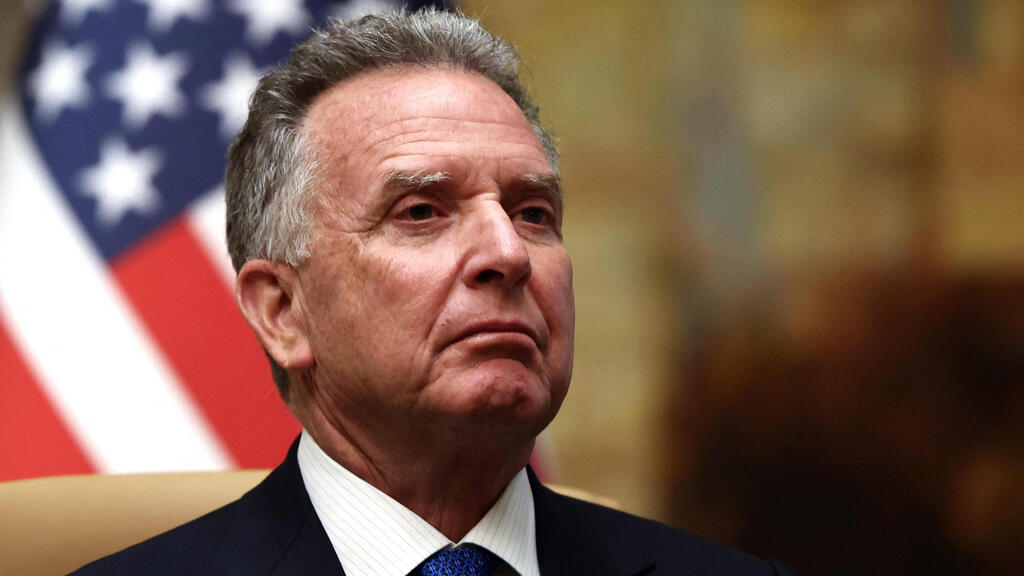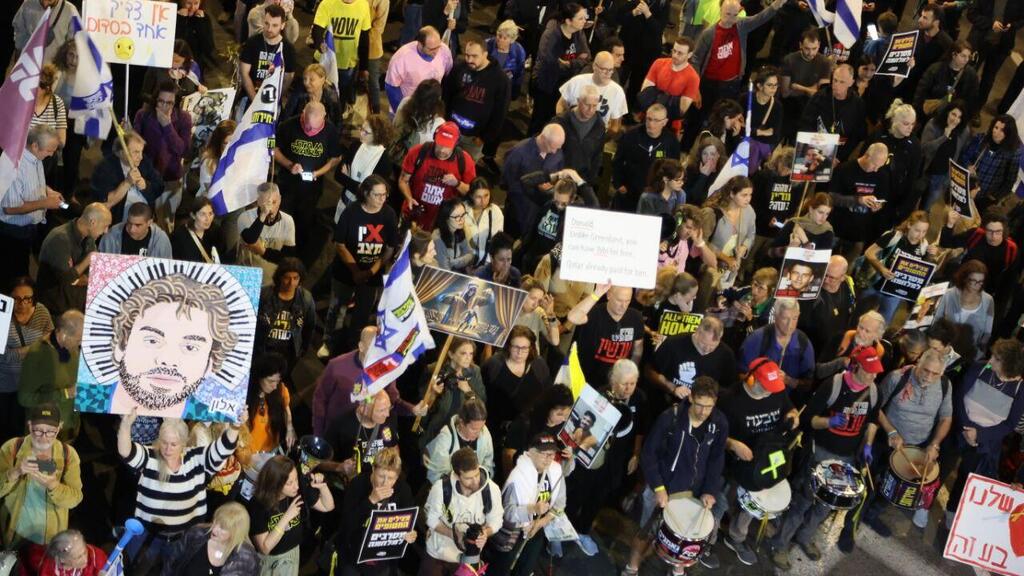Getting your Trinity Audio player ready...
U.S. hostage envoy Adam Boehler attempted to secure the release of Edan Alexander—the last known American-Israeli hostage alive in Gaza—in time for former President Donald Trump to announce it during his March 4 address to Congress, according to an investigation by The New York Times. However, negotiations were still ongoing when Trump arrived at the Capitol, and the effort missed the deadline.
The report, citing four individuals familiar with the discussions, states that Trump was forced to reference the hostages only indirectly during his speech. Still, both sides showed strong interest in reaching a deal, and talks continued into the following day.
4 View gallery


From left, Prime Minister Benjamin Netanyahu, US President Donald Trump, Hamas negotiator Khalil Al-Hayya
(Photos: AP/Ariel Schalit/Ohad Zwigenberg/Carlos Osorio/רויטרס/REUTERS/Ibraheem Abu Mustafa)
The Times revealed that senior Trump administration officials held three clandestine meetings with Hamas leaders in a walled compound in Qatar during March. These talks marked a dramatic departure from long-standing U.S. policy forbidding direct contact with the terrorist group. Trump, however, had made the release of hostages a top priority and was willing to go further than past administrations to secure their freedom. Ultimately, the effort failed due to firm Israeli opposition, Hamas hesitations and shifting internal dynamics within the Trump administration.
The negotiations began on March 2 and ran independently from faltering efforts to extend the Israel-Hamas ceasefire. Prime Minister Benjamin Netanyahu had refused to move to the next phase of a broader hostage deal, which would involve the release of all hostages to end the war, unless Hamas first surrendered its military and governing capabilities. Hamas indicated willingness to give up civil control of Gaza—but not its weapons.
The diplomatic deadlock led U.S. officials to believe that a renewed Israeli offensive in Gaza was imminent, which would endanger Alexander and hinder the recovery of the remains of four American-Israeli citizens: Capt. Omer Neutra, Sgt. Itay Chen, and Gadi and Judi Weinstein-Haggai. According to sources, Boehler hoped Hamas might make a goodwill gesture to Trump, and believed a separate deal for Alexander could unlock more serious talks on a second phase of the agreement.
During the first meeting, which took place after the Ramadan fast-breaking iftar meal, three senior Hamas officials—Tahar al-Nunu, Bassem Naim and Osama Hamdan—welcomed Boehler and his advisor – a recent graduate of Harvard Business School - in a room decorated with a mural of Jerusalem's al-Aqsa Mosque and a photo of assassinated Hamas leader Ismail Haniyeh. The sides spoke into the night, sharing knafeh and fresh orange juice while discussing October 7 and the broader Israeli-Palestinian conflict.
The senior Hamas figures tried to appeal to their American counterparts. Al-Nunu claimed that Hamas was trying to achieve freedom for the Palestinians – a value that he said the Americans held sacred.
In a follow-up meeting two days later, Boehler met with Khalil al-Hayya, Hamas’ lead negotiator. Al-Hayya said that under normal circumstances, Hamas would demand 500 prisoners in exchange for someone like Alexander but would settle for 250—including 100 serving life sentences—as a goodwill gesture. He expressed confidence that the U.S. could pressure Israel to accept.
Get the Ynetnews app on your smartphone: Google Play: https://bit.ly/4eJ37pE | Apple App Store: https://bit.ly/3ZL7iNv
Boehler considered 250 too high but later proposed a phased release: 100 serving life terms initially and 150 more later. However, this offer had not been coordinated with Israel, where only about 300 such prisoners remain—considered essential bargaining chips for a future comprehensive hostage deal. Israeli officials were alarmed, fearing that releasing too many for a single hostage would compromise broader negotiations.
Boehler faced pushback from Israel. He received an angry call from Strategic Affairs Minister Ron Dermer, a close Netanyahu ally, who complained about not being informed in advance. The leak to Axios about Boehler’s meeting with Hamas was believed by American officials to have originated in Israel, possibly to derail the talks.
Though the U.S. typically coordinates on sensitive security matters with Israel, the Trump administration may have decided not to be as transparent due to a previous attempt to meet with Hamass. Right after Trump’s inauguration, Boehler had traveled to Doha hoping to meet Hamas leaders, but the plan was scrapped after Netanyahu’s office intervened through White House contacts.
Throughout the March talks, Boehler coordinated with Steve Witkoff, Trump’s Middle East envoy. Ahead of a final March 5 meeting, the U.S. revised its offer: 100 prisoners for Alexander, release of Palestinian women and minors for the remains of the four Israeli-American hostages, and a resumption of humanitarian aid to Gaza. The offer also included a plan to send Witkoff to Doha, to iron out differences, close the deal on the Israeli-American hostages and begin phase-two negotiations.
When Boehler presented the offer, al-Hayya indicated that Hamas could not accept it, even if he personally supported it. He insisted the number could not drop below 250, according to four sources familiar with the conversation, adding that the decision was not in his hands.
While the talks centered on a possible hostage deal, they also dealt with Hamas' vision for Gaza's future. Al-Hayya said Hamas would consider a five-to-ten-year ceasefire during which it would lay down arms. He also requested the release of leaders of the Texas-based Holy Land Foundation, convicted in the U.S. in the early 2000s for funneling millions to Hamas.
At the final meeting, Boehler warned that the proposal would be withdrawn if not accepted before he left Doha. Al-Hayya declined.
A week later, Hamas released a statement expressing willingness to make a deal for Alexander and the remains of the American-Israeli hostages. Sources said the proposal mirrored Boehler’s. But it was too little, too late. Boehler was no longer engaged in direct negotiations. When Witkoff arrived in Doha in mid-March, he demanded a higher number of living hostages and no ceasefire precondition. Days later, Israel resumed its offensive in Gaza—and Alexander remains in captivity.




